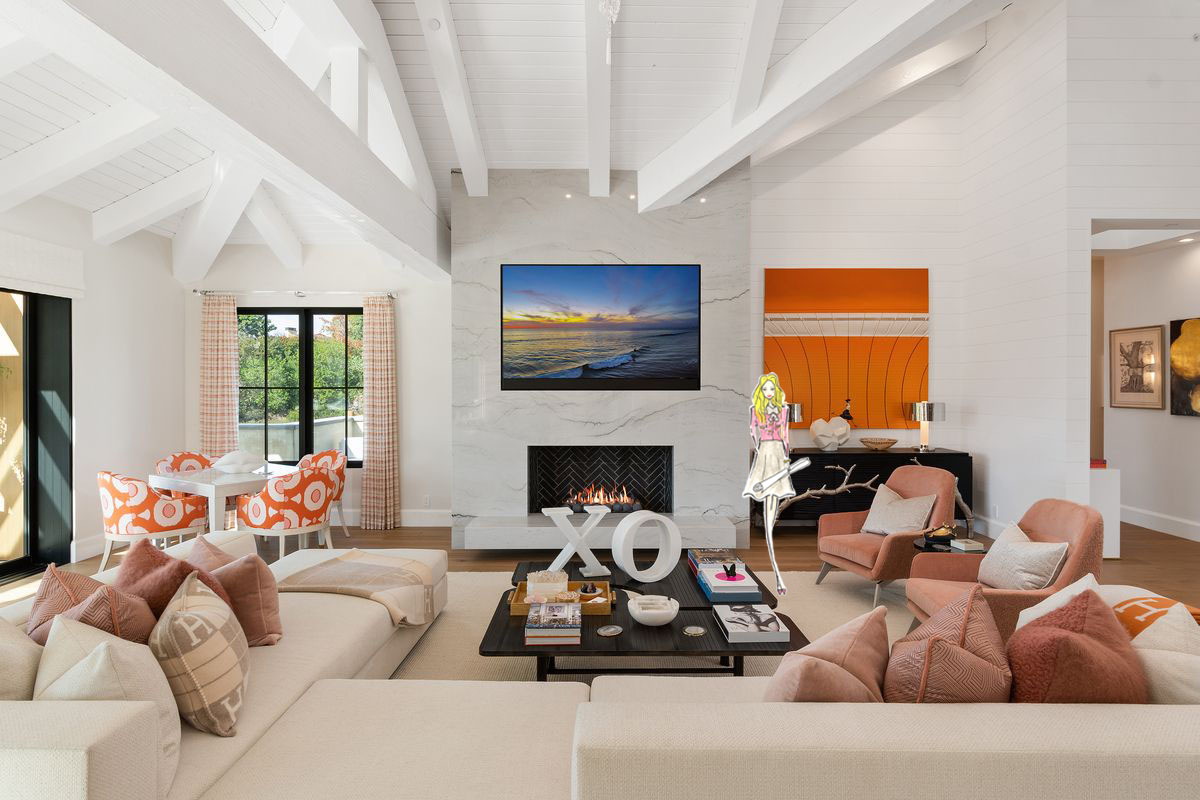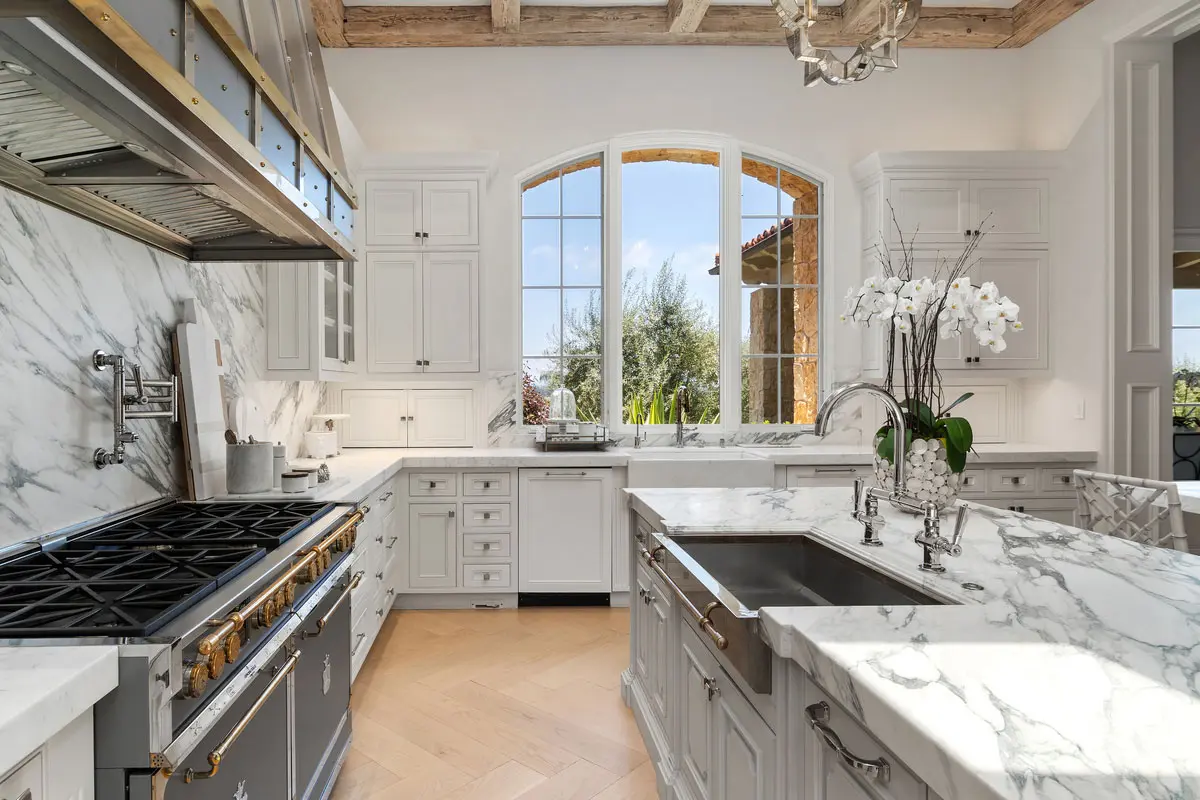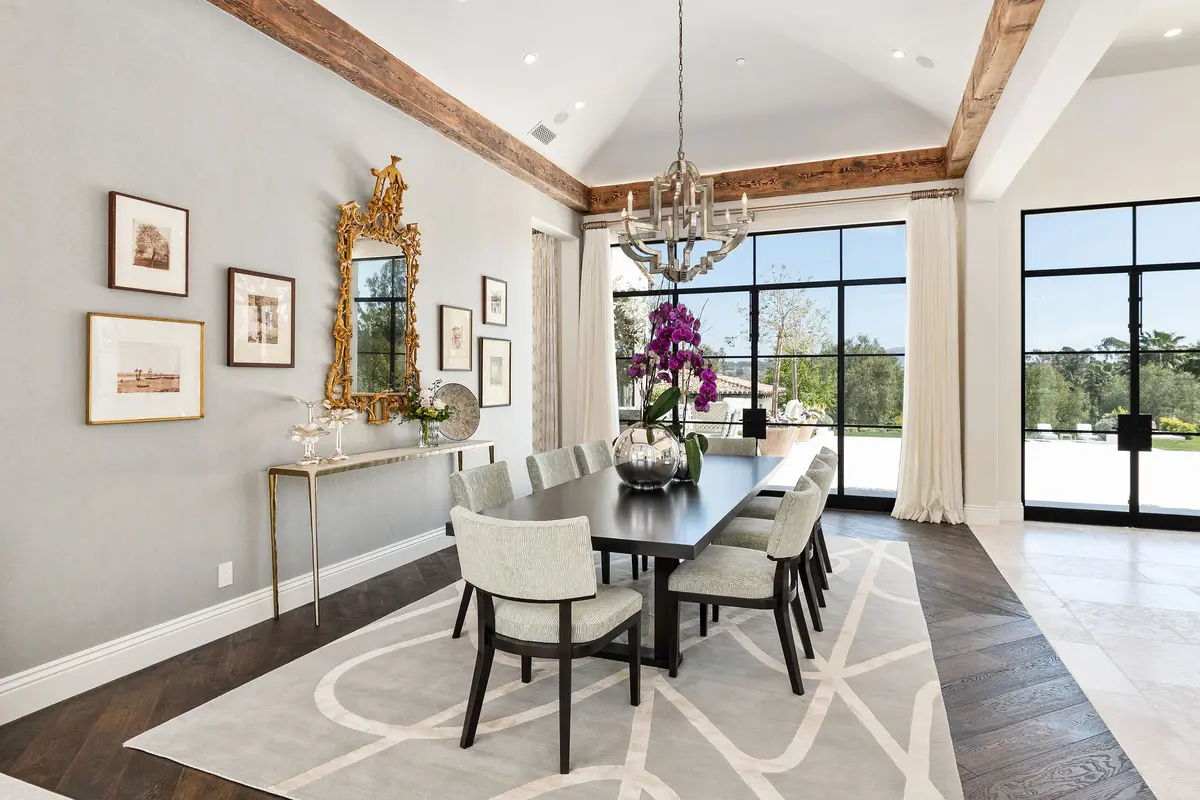Redefining Luxury Through Strategy, Not Excess
Luxury doesn’t demand limitless funds. The most refined interiors are not born from unchecked spending, but from precision and thoughtful hierarchy. True luxury lies in the details, in the narrative behind every choice, and in knowing where a high-impact investment will do more than a dozen lesser ones.
Rather than equating luxury with abundance, savvy designers prioritize proportion, materiality, and craftsmanship. They understand how to make a room feel layered and curated, not crowded and chaotic. With a discerning eye, even modest budgets can deliver spaces that feel rich, tailored, and deeply personal.
Where to Splurge: High-Impact Investment Pieces
Lighting: The Jewelry of the Room
Lighting defines mood and dictates how every other element is perceived. A sculptural pendant in a dining room, artisan sconces in a hallway, or a bespoke chandelier in a foyer can serve as visual centerpieces. These fixtures cast layered light that sculpts walls, highlights texture, and creates ambiance.
High-end lighting is worth the investment not only for its craftsmanship but for its transformative power. Quality fixtures offer superior dimming control, better materials, and longevity that generic pieces can’t match.
Hardware & Fixtures
Often overlooked, hardware is the tactile luxury of everyday life. The weight of a brass handle, the click of a custom door latch, or the arc of a designer faucet elevates even the most minimal spaces. These are the details that guests notice subconsciously and that homeowners interact with constantly.
Opt for solid metals with patina potential—unlacquered brass, oil-rubbed bronze, or brushed nickel—materials that age beautifully and feel intentional in the hand.
Upholstery & Bespoke Furniture
Anchor pieces—sofas, headboards, dining chairs—set the tone for an entire room. Custom or semi-custom upholstery ensures better scale, superior fill, and the opportunity to select high-performance textiles. These pieces don’t just look better—they last longer, feel better, and resist trend fatigue.
Unlike mass-produced furniture, bespoke options can be designed to suit exact proportions and style intent, becoming heirloom-quality focal points.
Millwork & Architectural Details
Permanent elements like crown molding, coffered ceilings, built-ins, and wainscoting deliver immediate visual weight. They add structure, depth, and polish—features often found in high-end homes. Investing here enhances not only daily enjoyment, but resale value.
Where to Save: Smart Alternatives Without Sacrificing Style
Paint and Wall Treatments
A rich paint color in a matte or eggshell finish can feel as indulgent as wallpaper. Tone-on-tone palettes, contrasting trim, or brushed-on limewash treatments mimic the depth of high-end applications at a fraction of the cost.
Removable wallpapers and textured paints provide temporary style statements—ideal for accent walls or powder rooms.
Rugs and Window Treatments
Instead of investing in custom drapery or heirloom rugs, try layered solutions. Hang ready-made curtains high and wide for a tailored look. Combine flatweaves or machine-made rugs with textured furniture to balance cost and depth.
Decor and Accessories
Accessories are style signals—not status symbols. Well-placed sculptural objects, oversized art books, and natural elements like branches or stone bowls can enrich a room without overspending.
Because decor trends evolve quickly, save your budget for adaptable pieces. Seasonal refreshes and vintage finds keep spaces feeling current without major reinvestments.
Strategic Swaps: Budget-Friendly Yet Chic
Material Swaps With a Luxe Feel
Engineered quartz that mimics Calacatta marble. Porcelain tiles that echo travertine. Matte laminates that resemble rift-cut oak. The key is sourcing quality alternatives with authentic grain, subtle veining, or tactile texture. When specified with care, these substitutions read as sophisticated—especially in secondary spaces or high-use zones.
Using Scale and Proportion Over Price
A room doesn’t have to be filled with expensive items to feel luxurious. Instead, use scale to your advantage: oversized mirrors, large-format art, tall drapery panels. These elements create drama and draw the eye, giving the illusion of grandeur. Symmetry, balance, and layered height also contribute to an elevated aesthetic—no premium brand necessary.
Custom-Look Solutions Without the Custom Price
IKEA bases with custom doors. Box store furniture paired with high-end upholstery. Builder-grade vanities refinished with new hardware and a stone top. These are smart, scalable hacks that deliver high design without high costs. Semi-custom cabinetry and built-ins—using modular systems with thoughtful upgrades—can mimic the look of full custom work for less.
Room-by-Room Budgeting Tips
Kitchen: Prioritize Hardware, Lighting, and Backsplash
Skip the ultra-luxe cabinet boxes and go for quality fronts and hinges. A standout backsplash and showpiece light fixture can define the room. Stick with reliable, mid-tier appliances that offer strong warranties.
Bathroom: Splurge on Tile and Plumbing Fixtures
Stone or artisan tile makes a small space feel luxurious. High-quality faucets and shower systems elevate both look and experience. Save on the vanity with a vintage dresser conversion or well-made prefab base.
Living Room: Invest in a Great Sofa
Comfort and longevity matter here. Splurge on a tailored, well-filled sofa in a timeless fabric. Save on side tables and accessories—layer them with books, greenery, and lighting for visual fullness.
Bedroom: Splurge on Bedding and Headboard
High-thread-count linens, layered textures, and a custom or upholstered headboard transform the bedroom into a retreat. Save on secondary furniture like nightstands and accent décor; focus instead on lighting that dims and softens.
The Role of Design Expertise in Stretching Budget
Why a Designer Prevents Costly Mistakes
A well-trained designer knows how to make every dollar perform. They reduce the risk of missteps—choosing the wrong sofa scale, buying poor-quality tile, misplacing lighting—and streamline decision-making with strategic guidance. Designers also understand the real cost of cutting corners and where investment is critical to long-term satisfaction.
Leveraging Procurement Channels
Design professionals have access to trade-only pricing, exclusive vendor relationships, and early access to limited-run collections. They can source luxury at a better price, passing savings to the client. Sample sales, showroom seconds, vintage auctions, and industry contacts become powerful tools in creating bespoke spaces at a fraction of retail.
Aesthetics Without Excess: The New Definition of Luxury
Luxury today is about refinement, not saturation. It’s about knowing what not to include as much as what to feature. A clean-lined room with thoughtful materials and meaningful accents far outweighs one crowded with label-heavy décor. Clients increasingly seek homes that feel collected over time—soulful, tailored, and quietly confident.
Elegant Doesn’t Have to Mean Expensive
A strategic design approach allows even modest budgets to yield luxurious results. Prioritize pieces that ground a space—lighting, upholstery, hardware. Save on items that evolve quickly or support the background. Luxury is not about the price tag; it’s about how a space makes you feel.
With expert guidance, refined materials, and thoughtful intent, your home can feel elevated, enduring, and entirely your own. Let Kern & Co. help you design a space where every dollar counts—and every detail speaks volumes.
Frequently Asked Questions
How can I create a luxurious space without overspending?
Focus on quality over quantity, invest in high-impact areas, and choose smart material alternatives. Use scale, proportion, and texture to evoke richness without excess. Even modest homes can achieve elegance through intentional design and layered detail.
What features make the biggest impact in a room?
Lighting, hardware, furniture scale, and architectural details often define the luxury feel of a space. These elements create visual structure and elevate the overall experience. Their presence sets a tone of refinement that resonates throughout the home.
Are high-end materials worth it in every space?
Not always. Strategic substitutions and thoughtful placement can deliver the same effect in less visible or low-traffic areas. Prioritize high-end finishes in focal points, and reserve alternatives for areas where durability and style can be balanced more economically.



